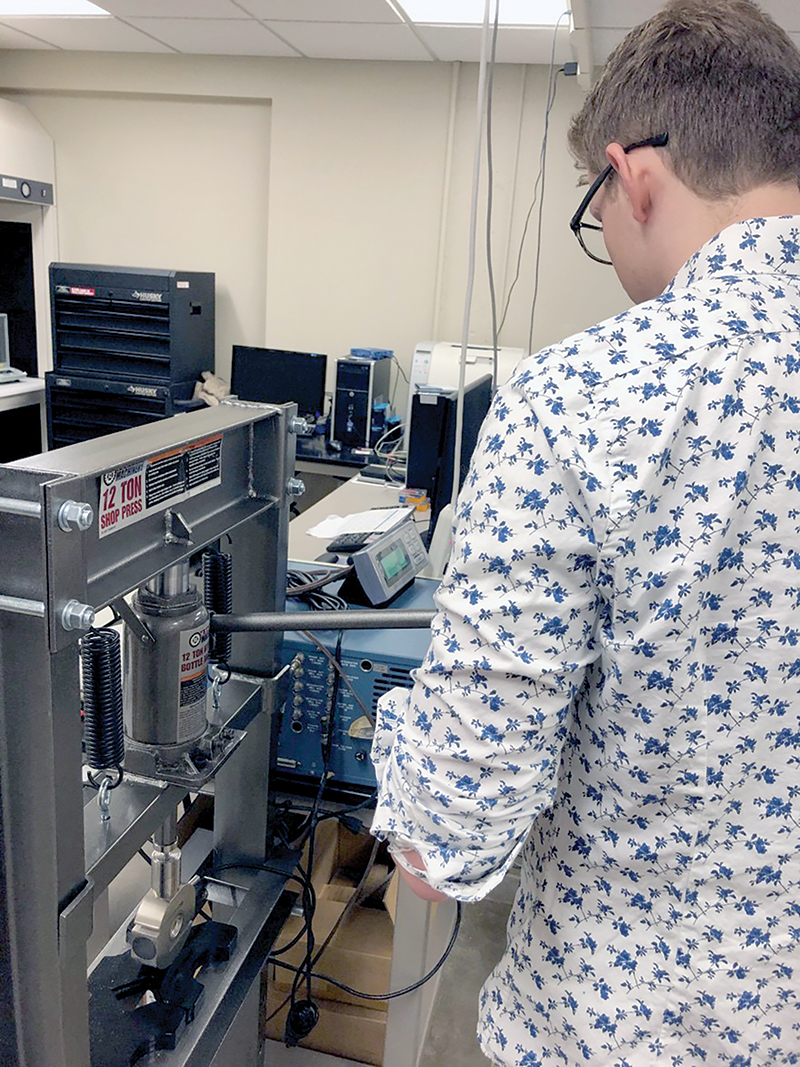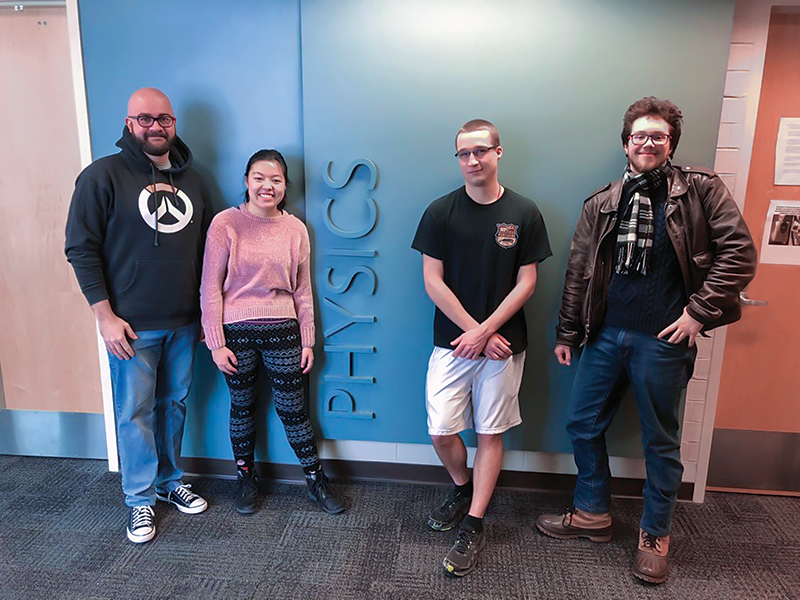Investigating the Ionic Conductivity Plateau in Lithium Glasses
Investigating the Ionic Conductivity Plateau in Lithium Glasses
2018–19 SPS Chapter Research Award
Project Lead: Anne Ruckman
Chapter Advisor: Caio Bragatto
Project Summary: Research suggests that the ionic conductivity of glass is influenced by the presence of lithium, but the physical mechanisms behind this behavior are not well understood. We investigated this experimentally and computationally by preparing silicate and borate glass samples with different lithium concentrations, conducting electrical impedance spectroscopy measurements, and comparing our results to predictions from existing models.

The electrical conductivity of a glass depends on the number of available charge carriers and their speed. In ionic materials, the charge carrier is almost always an alkali metal or monovalent metal. Scientists expect that glasses with higher alkali ion concentrations should have greater ion conductivity because there are more available charge carriers. However, this is not the case in glasses with high concentrations of lithium. Instead, the ionic conductivity seems to plateau.
The literature often interprets this plateau as an experimental rather than physical limitation, or as a change in glass structure. However, neither of these interpretations fully explain the observed behavior. Molecular dynamics simulations suggest that when present in high concentrations, lithium ions cluster and inhibit a rise in ionic conductivity.
To get a better understanding of this behavior, our chapter experimentally and computationally investigated the impact of lithium concentration on the properties of lithium borate oxide glasses. The Coe College physics department was well equipped for this project, with the capacity to prepare glass samples with high concentrations of lithium and a newly acquired impedance spectrometer, which is necessary for measuring ionic conductivity.
After learning several techniques and refining the process through troubleshooting, we successfully prepared samples of silicate glass and borate glass with various concentrations of lithium. Then we ground the samples into a powder for analysis. We characterized the properties of each sample with electrical impedance spectroscopy, differential scanning calorimetry, Raman spectroscopy, X-ray diffraction, and nuclear magnetic resonance. This gave us a picture of their electrical and thermal properties as well as atomic structures.
The physical properties and glass structures we measured agreed well with the results published in literature and, importantly, all followed the same conductivity trend. This indicates that our samples were homogeneous.
Most of our results agreed with existing models. However, we noted a discontinuity in ionic conductivity between the leading model and our experimental results—the same plateau that appears in other published experimental results. This supports the theory that something interferes with the ionic conductivity that’s not accounted for in the model. Our work adds to the literature about this interaction, and we are looking forward to sharing it with other researchers in the field.
Eight SPS chapter members were actively engaged in this research project, and many others attended a related research talk and visit to a lab at Iowa State University that collaborated with us. As researchers, we learned novel techniques, gained experience on new equipment, and enhanced our communication, teamwork, and problem-solving skills. This project also strengthened the relationship between undergraduates and faculty members and between first-year undergraduates and more senior students in our chapter. We look forward to continuing this area of research and further utilizing our newly acquired skills.

To learn more about this project, visit spsnational.org/awards/sps-chapter-research-award/2019/coe-college.
